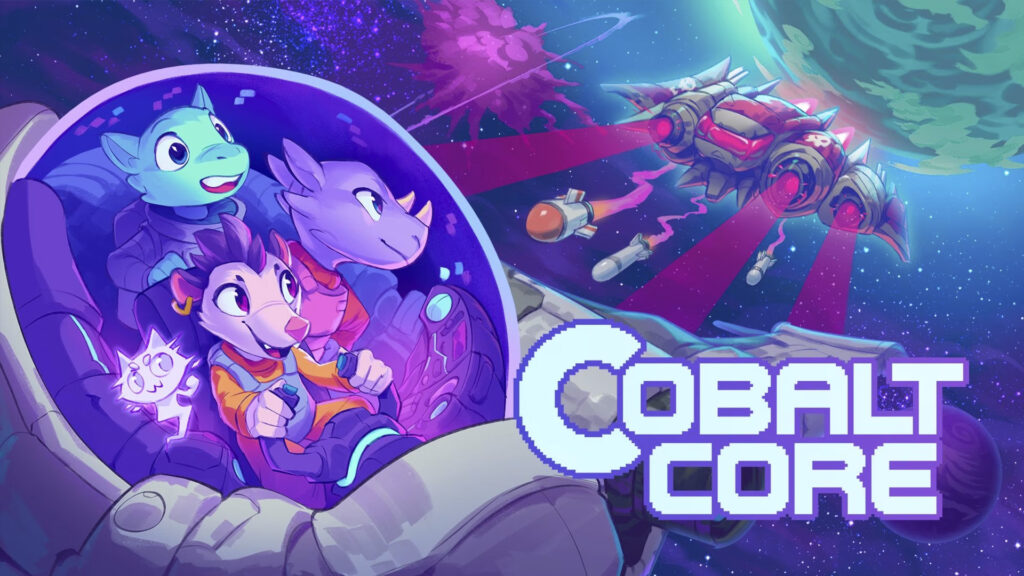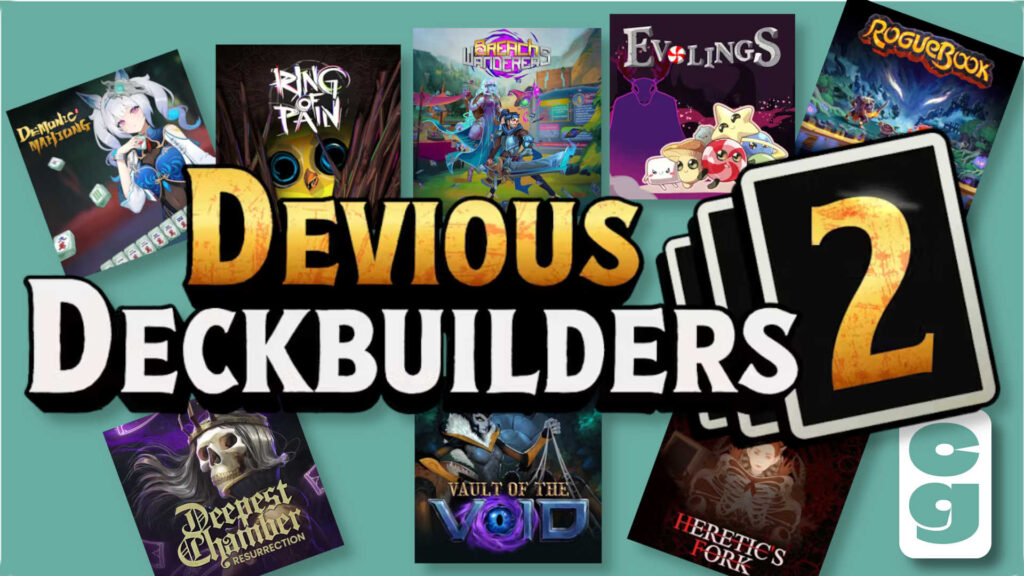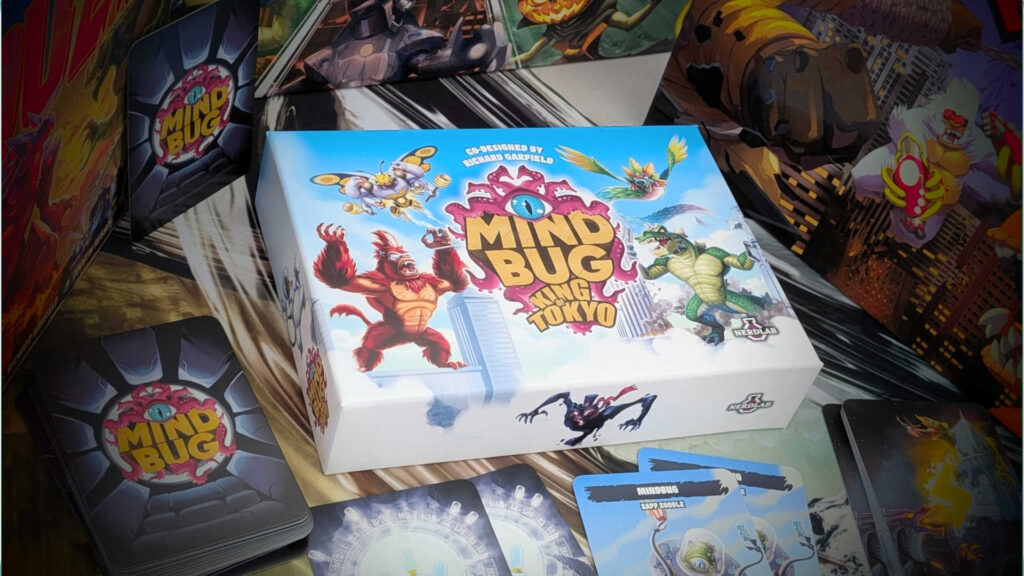Images courtesy of Brace Yourself Games
The space for roguelike deckbuilders is congested. After the smash hit Slay the Spire rocketed up the charts and cemented the genre as a potential design exploration, many have followed in its footsteps, yet very few have reached the stars. Cobalt Core, which currently sits at an Overwhelmingly Positive rating on Steam, is a sci-fi roguelike deckbuilder that has broken the mold and gravitated players towards it.
But what gave it a meteoric rise in the universe of deckbuilders?
Table of Contents
ToggleA Cobalt Core Run
As with all roguelike deckbuilders, Cobalt Core (published by Brace Yourself Games and developed by Rocket Rat Games) outfits us with a prebuilt deck that we have to refine, upgrade, and cull throughout the course of a run.
We begin the game with three unlocked characters: the defensive Dizzy, nimble Riggs, and the aggressive Peri.
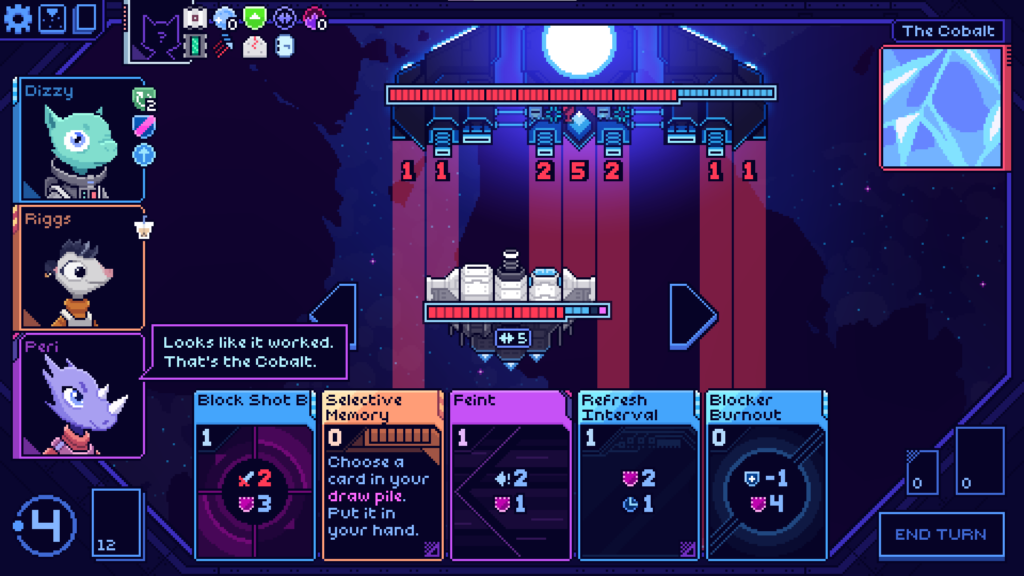
Each run has three Zones, and by getting to the end of Zone 3, we come face to face with the final boss, The Cobalt.
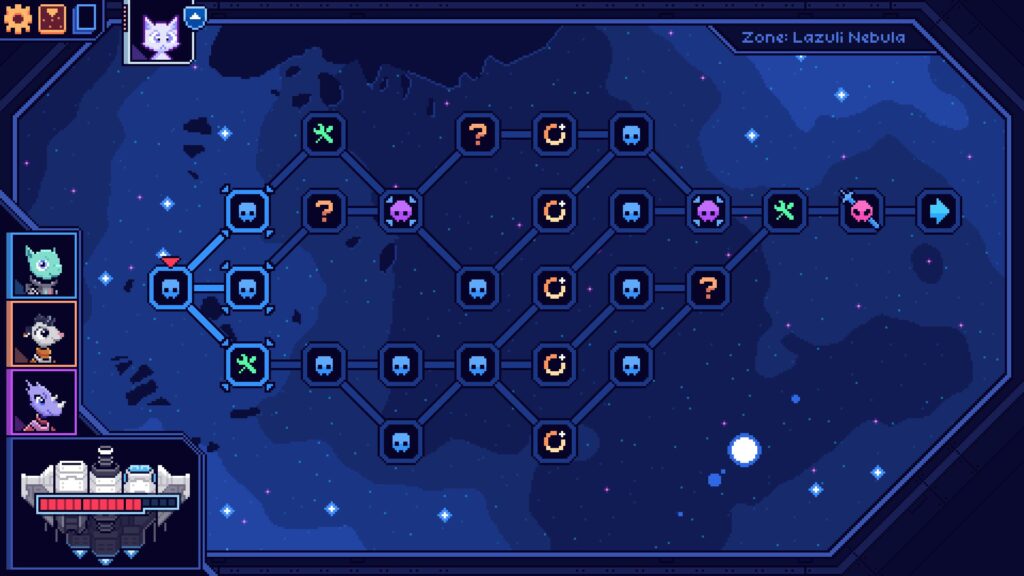
Similar to Slay the Spire, the map gives several nodes and paths to take, each with their own encounters. The normal enemy fight pits us against a lesser ship, where we can pick or skip a card which belongs to the pool of our three chosen characters, while random events, encounters, and Artifact nodes can award more powerful cards, Artifacts, or upgrades to the ship.
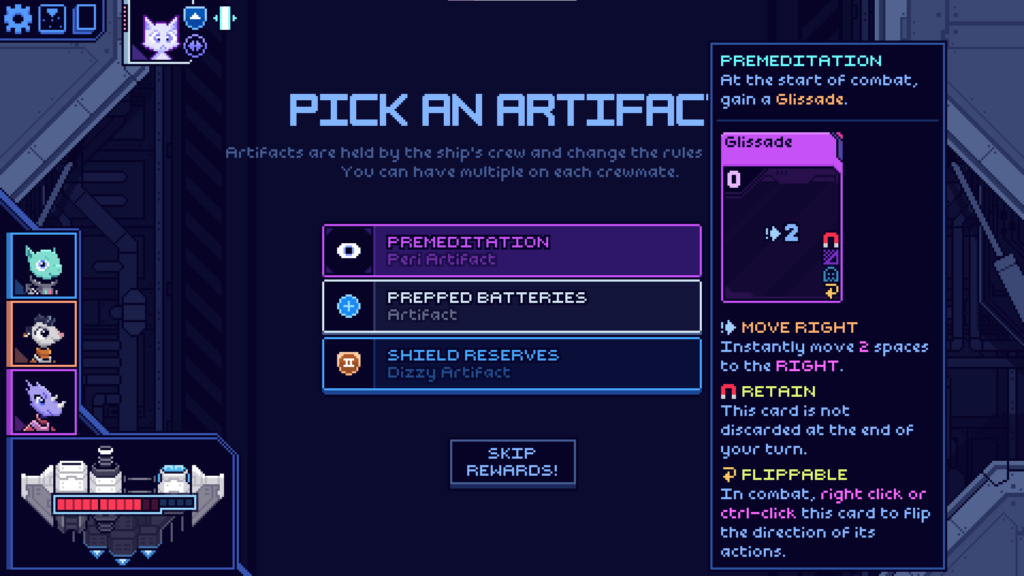
The purple nodes are Elite fights, which are more powerful and usually have some kind of gimmick, while the pink nodes are the final bosses of each Zone.
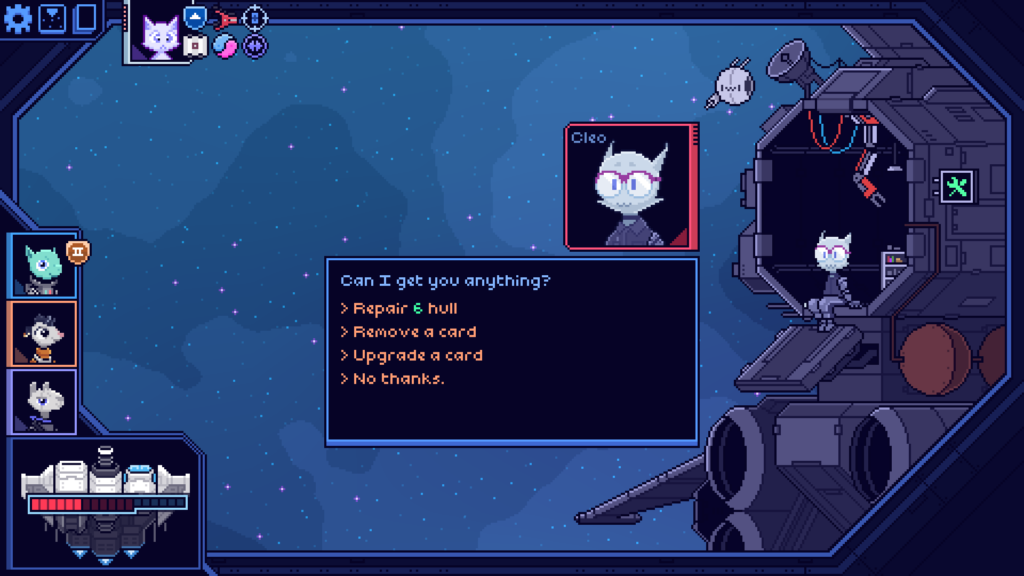
The green nodes are the Repair Yards, where we can either heal up, upgrade or remove a card, and other secret options unlocked later down the line.
While the map has plenty of nodes, the paths are pretty simplistic, with little choice to branch off to another choice later down the line. Though this does add to the game’s charm, it’s a bit more simplistic than other cerebral roguelike deckbuilders.
A Mechanical Exploration of Cobalt Core
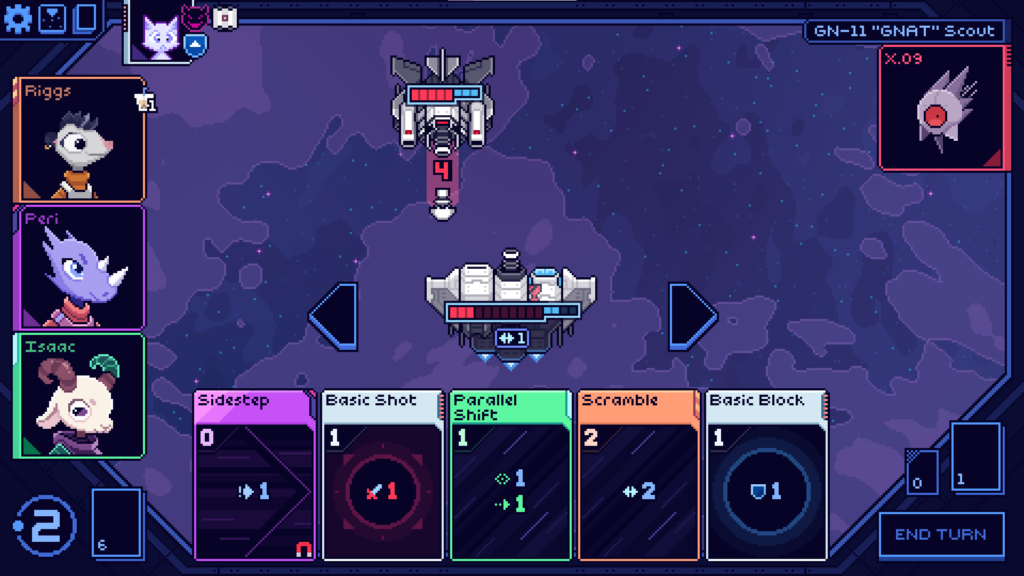
While other deckbuilders pit us on a one-to-one combat RPG style, in Cobalt Core, the enemy encounters are dogfights in a 2D grid. As such, the game’s positioning element, where we can move to the left or right to dodge lasers and rockets, becomes a core part of the gameplay experience. In fact, spending our energy on Evasion is one of the most effective ways to preserve our Shields and Hull (the in-game term for life). So there’s always a consideration: do we shoot the opposing ship, or do we just play defensively and dodge. Or better yet, how can we shoot them and move out of the way before their turn?
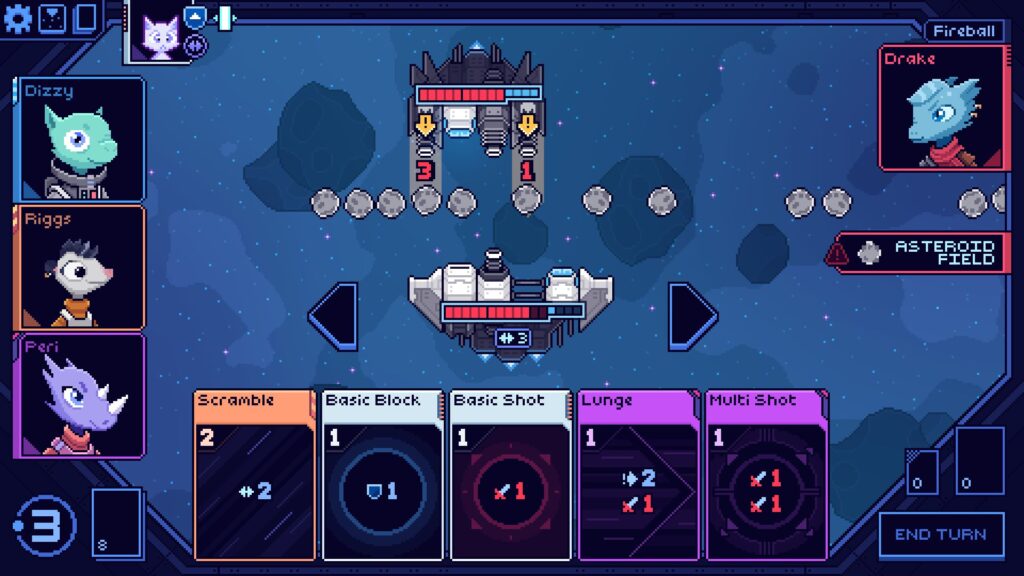
The battlefield also paves the way for some innovative ideas. The board isn’t just us versus the opposing ships; there’s a middle row where obstacles such as asteroids and mines exist. This area is also where we can launch homing missiles, additional attack drones, defensive support, or even just place any object to block the opponent’s big attack.
Another feature of the battlefield are certain environmental modifiers, such as Solar Flare, Solar Wind, or an Asteroid Field, which changes the flow of the dogfight in various ways.
Upgrade Paths in Cobalt Core
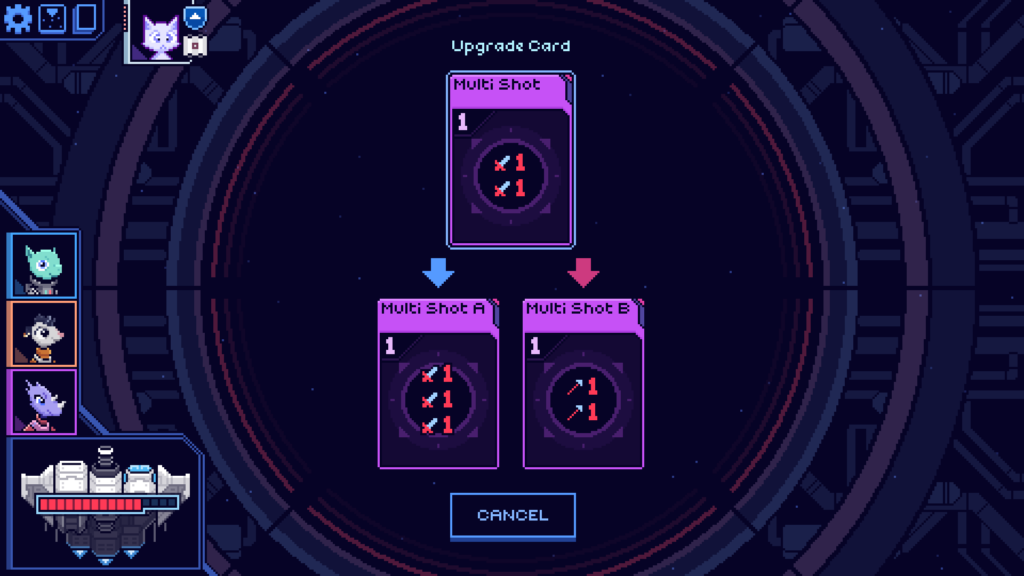
The typical deckbuilder only has a singular upgrade for cards. However, Cobalt Core presents two paths for each card, which creates some interesting choices for the player. It’s kind of the middle line between Slay the Spire‘s singular upgrade, and Monster Train‘s customizable one.
For instance, Parry, one of the strongest attacks in the game, can be upgraded so that it doesn’t Exhaust (removed from the fight) after play, or could have the Retain keyword, which lets it stay in our hand even if we don’t play it that turn; we can wait for the perfect opportunity to use it instead.
These choices are entirely dependent on the Artifacts (relics) or other cards we pick up during our hour-or-so run, which creates crucial decision points.
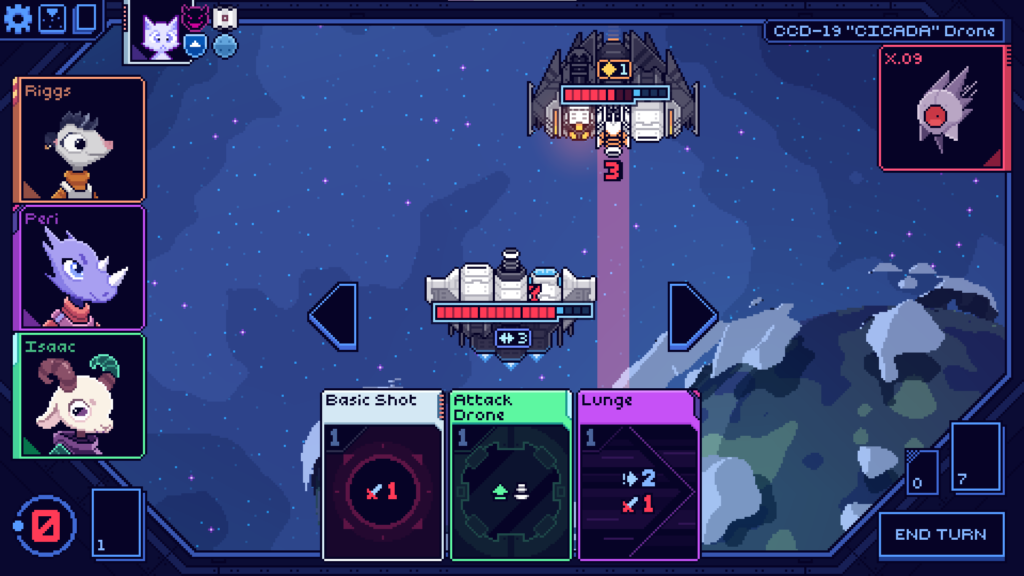
Lest we forget, even the ship can have upgrades! We can outfit our ship with Armor, which means the specific part takes one less damage when hit. Meanwhile, harder difficulty runs will burden us with Weak, which translates to one extra damage taken per hit, or Brittle, which doubles all damage on that part! And again, specific parts having various traits gives a bit more depth to the positioning aspect of the game.
Cobalt Core Metaprogression
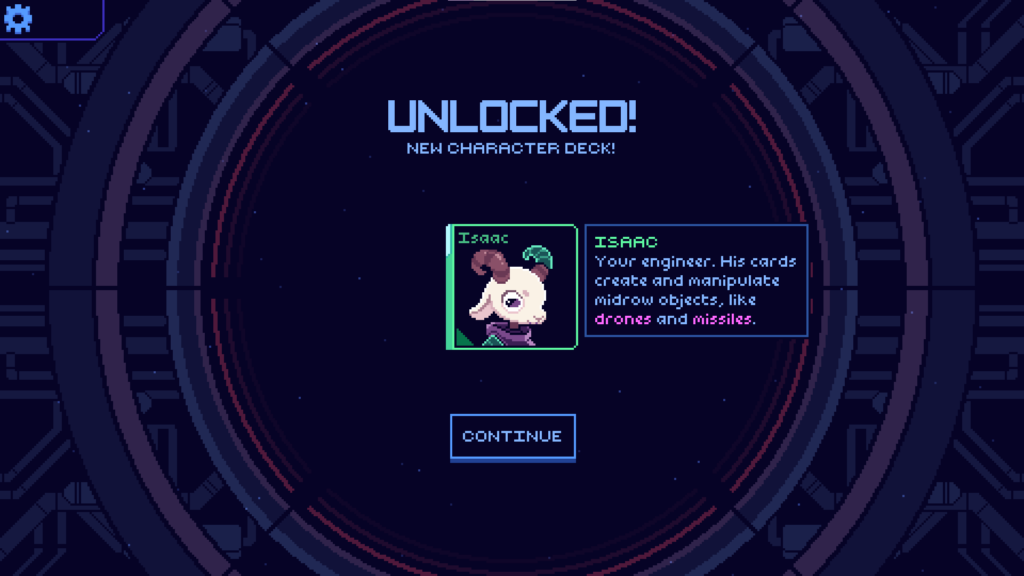
Though the starting cast shoehorns us into having no choices, that’s not a flaw of the genre. As we play more and more, we get to unlock an adorable lineup of characters, each with their own endearing personalities: the genius engineer Isaac, the hot-headed Drake, the hacker Max, and two other secret characters I won’t spoil!
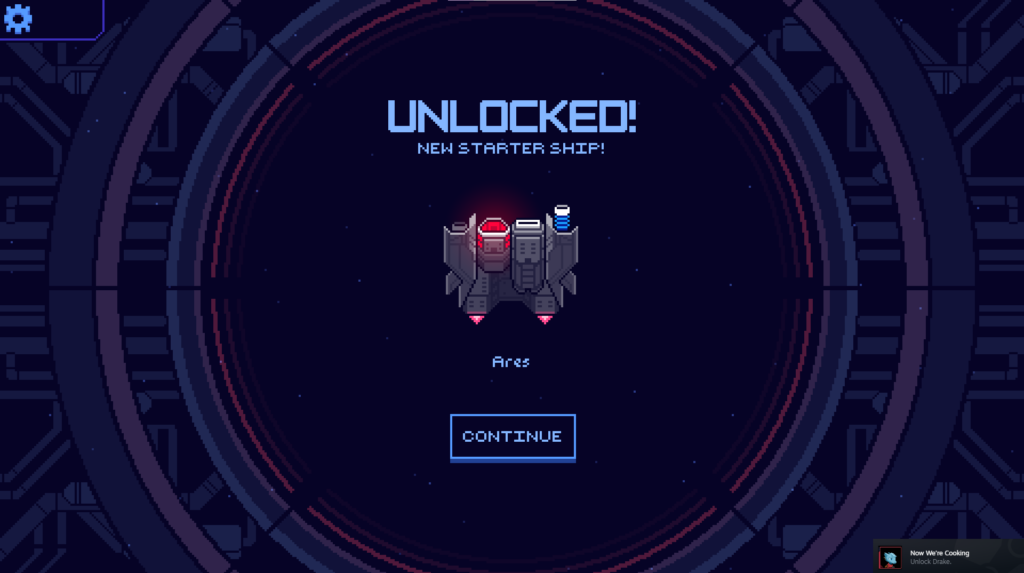
Similarly, while we begin with the beginner ship Artemis, we soon unlock spacecrafts with some unique mechanics: the dual-gun swapping Ares; the projectile-favored Jupiter; the double-cannon, double-missile bay Gemini; and the defensive Tiderunner.
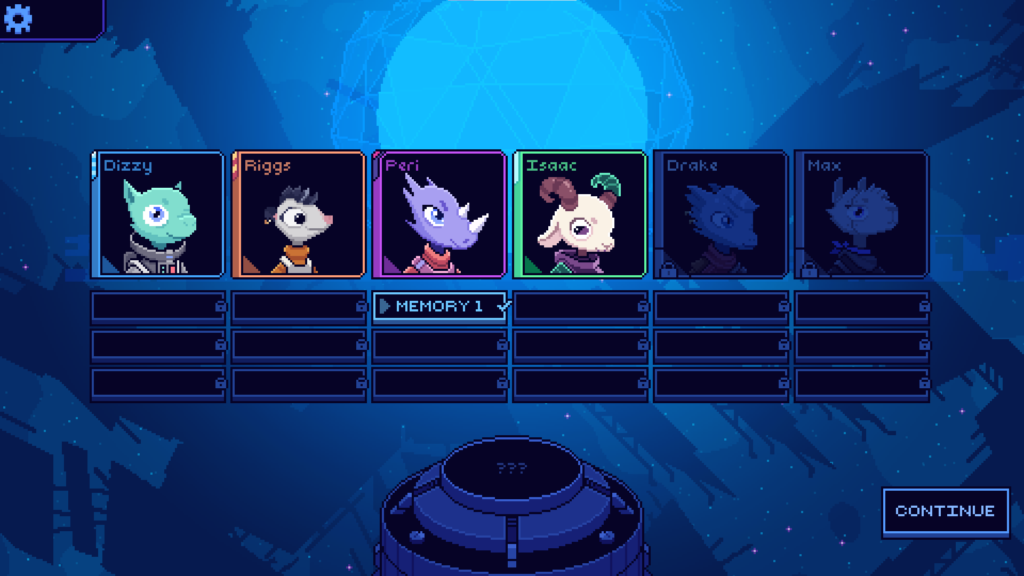
Each run also allows us to unlock new memories for our ship’s crew; flashbacks of their lives before the game began, or backstories which flesh out their personalities. Frankly speaking, these little stories are reward enough for completing a run!
The Card Gamer Verdict on Cobalt Core
Check out Cobalt Core on Steam.
If you want more roguelike deckbuilder content, read our review of the Deck of Haunts, where we play as the haunted house or see what we know so far about Slay the Spire 2. While you’re here, consider knowing why The Bazaar had a controversial open beta launch.

